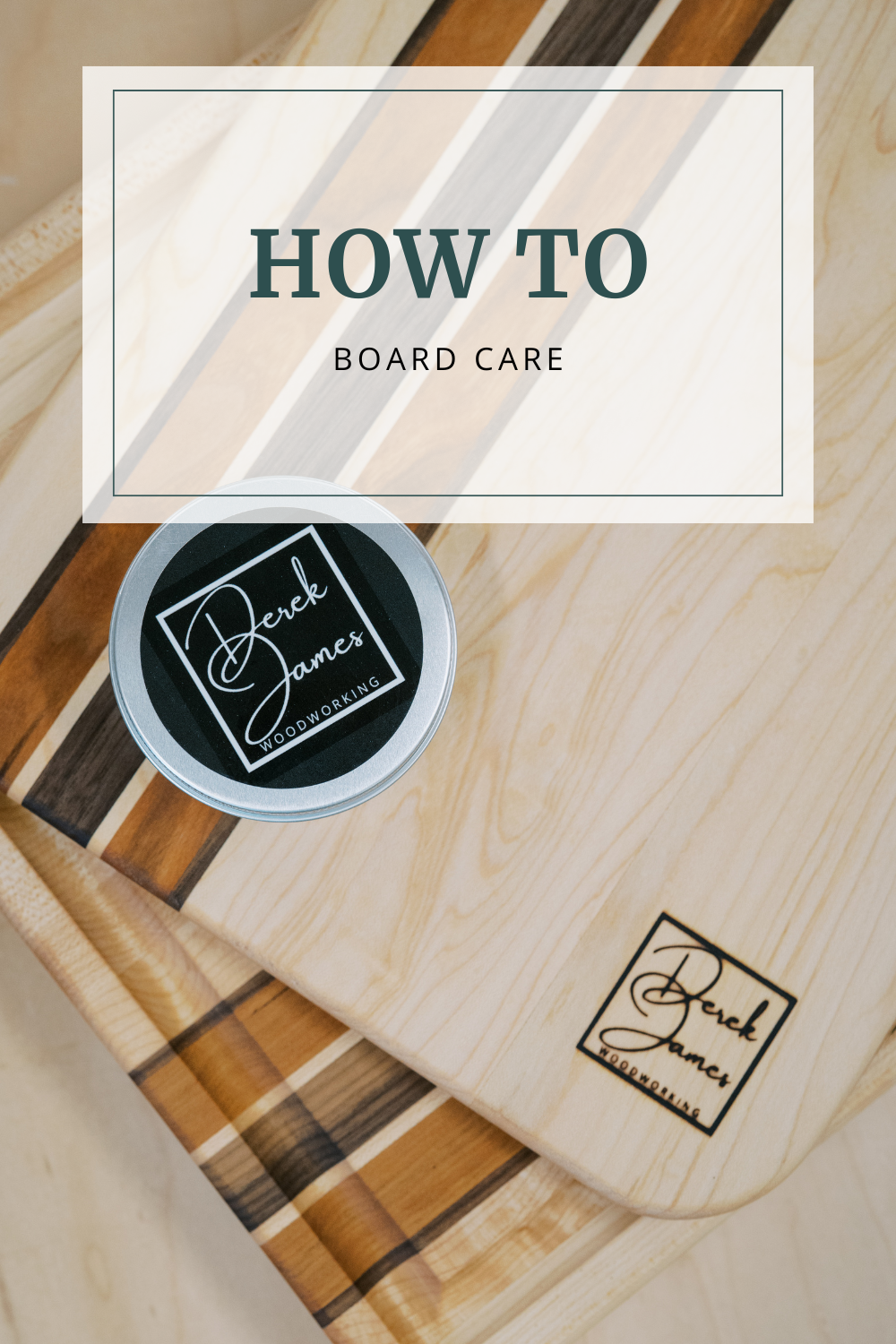Have you been wondering how to best take care of your cutting board or charcuterie board? Well we are here to help!
Board Care Basics
As needed, you should:
- Hand wash your board with warm water and a mild dish detergent.
- Do NOT submerge your board in water or put it in the dishwasher.
- Towel off and allow to air dry completely. Note: You should not leave it sitting on a towel to dry as the wood can absorb and hold the moisture from the towel.
Periodically and/or when your board begins to appear dry, you should recondition your board with DJW Board Balm.

- Apply a liberal amount of Board Balm using a cotton cloth (like a washcloth) and rub into the wood in a circular motion. Apply to all sides of the board.
- Let the board sit for 5-10 minutes to allow the balm to penetrate into the wood.
- Wipe off the excess with a clean cloth and buff in a circular motion until all of the excess balm is removed.
Did you know that each of our boards come with a tin of board balm? And when you need to replenish your supply, you can order more here.
More Than Basic Board Care
Basic washing and board balm work great for basic wear, but what about heavier use?
Here are a few tips and tricks to bring your board back to life.
Over time, washing your board may cause the wood grain fibers to raise giving the wood a fuzzy feel. To fix this:
- Start by thoroughly cleaning your board and allow it to dry completely.
- Sand your board with 220 grit sand paper or a sanding sponge.
- Note: Make sure you always sand in the direction of the grain (longways on your board).
- Once your board feels smooth again, wipe the dust off with a clean cloth and recondition with DJW Board Balm following the directions on the tin.
Need to remove scratches or knife marks?
- Start sanding with a more coarse grit sand paper such as 120.
- After the scratches are removed with the 120 grit sandpaper, remove the dust with a clean cloth and then sand the entire board with 220 grit sandpaper or a sanding sponge.
- Note: Be sure to always sand in the direction of the grain.
Other questions about board care? Send us an email or a DM on social media!

